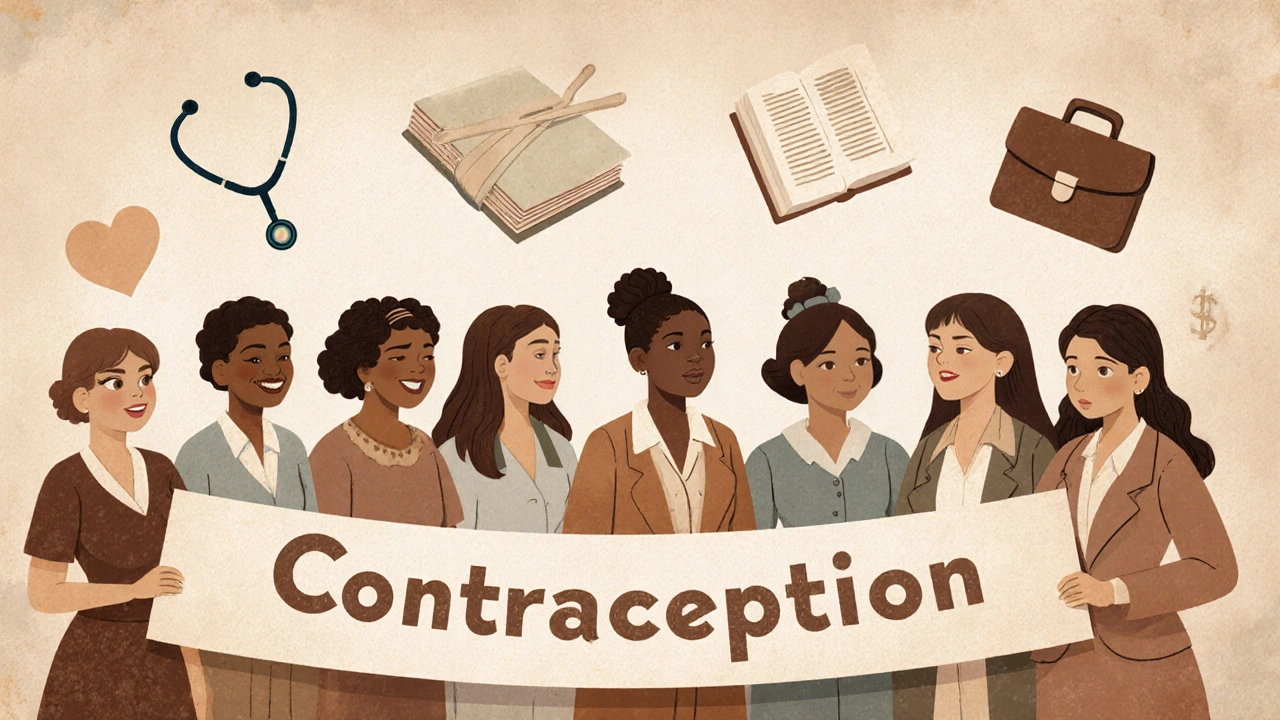Global Contraception: Methods, Policies, and Practical Guidance
When talking about global contraception, the worldwide set of methods and policies that help people prevent unintended pregnancies. Also known as family planning, it includes hormonal birth control, intrauterine devices, condoms, and emergency options. Understanding these pieces lets you make smarter choices about your health.
One core pillar is hormonal birth control, methods that use synthetic hormones to stop ovulation or thicken cervical mucus. Pills, patches, shots, and implants all fall under this umbrella. They differ in dosing frequency, side‑effect profile, and how quickly fertility returns after stopping. Knowing the efficacy rates (typically 91‑99%) helps you weigh convenience against reliability.
Another major player is the IUD, a small, T‑shaped device placed inside the uterus that provides years of protection. Copper IUDs act as a spermicide, while hormonal IUDs release levonorgestrel to thin the lining. Both offer over 99% effectiveness, but insertion requires a trained provider. The choice often hinges on how long you want protection and whether you prefer a hormone‑free option.
Barrier methods like condoms, thin sheaths that block sperm from reaching the egg and also protect against STIs, remain essential in the global mix. They are the only method that simultaneously reduces STI risk, making them a must‑have for many couples. Proper fit and consistent use push effectiveness up to 98%.
When a regular method fails or isn’t used, emergency contraception steps in. Whether it’s a high‑dose pill taken within 72 hours or a copper IUD placed up to five days after intercourse, these options can dramatically lower pregnancy risk. They don’t replace routine contraception but serve as a safety net for missed doses or unprotected moments.
Beyond the products themselves, family planning policies, government and NGO programs that improve access, education, and affordability of contraceptives, shape how well global contraception works. Countries with strong subsidized programs see higher usage rates and lower maternal mortality. Policy decisions about insurance coverage, over‑the‑counter availability, and sex education directly affect which methods people can actually use.
Medication interactions are a hidden factor that can tip the balance. For example, some antibiotics, anticonvulsants, and even over‑the‑counter pain relievers can reduce the effectiveness of hormonal pills. Articles in our collection explain how aspirin alternatives, gabapentin, and other drugs may influence birth‑control reliability, so you can spot red flags before they become problems.
All these pieces—methods, policies, and drug considerations—create a complex web that defines global contraception. Below you’ll find a curated set of articles that break down each topic, compare options, and give step‑by‑step advice. Dive in to get the details you need to choose the right approach for your lifestyle and health goals.

Global Contraception Access & Affordability: Facts, Challenges, and Solutions
Explore the global gaps in contraception access, why affordability matters, and proven strategies that improve reproductive health worldwide.
Read More




